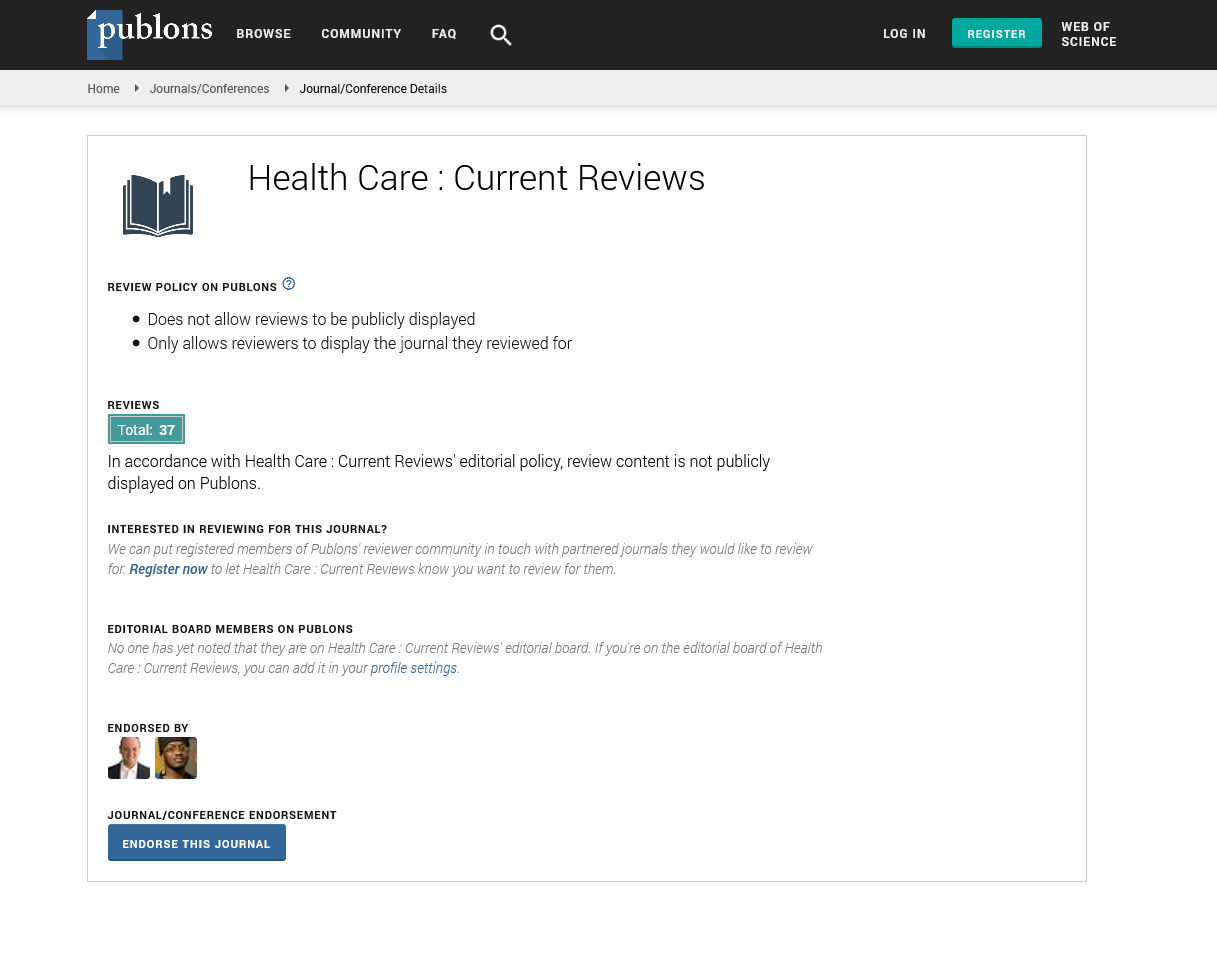Indexed In
- Open J Gate
- Academic Keys
- RefSeek
- Hamdard University
- EBSCO A-Z
- Publons
- Geneva Foundation for Medical Education and Research
- Google Scholar
Useful Links
Share This Page
Journal Flyer

Open Access Journals
- Agri and Aquaculture
- Biochemistry
- Bioinformatics & Systems Biology
- Business & Management
- Chemistry
- Clinical Sciences
- Engineering
- Food & Nutrition
- General Science
- Genetics & Molecular Biology
- Immunology & Microbiology
- Medical Sciences
- Neuroscience & Psychology
- Nursing & Health Care
- Pharmaceutical Sciences
Opinion - (2022) Volume 10, Issue 10
Applications of Health Information Technology in Health Care Systems
Daniel Max*Received: 03-Oct-2022, Manuscript No. HCCR-22-18638; Editor assigned: 06-Oct-2022, Pre QC No. HCCR-22-18638(PQ); Reviewed: 20-Oct-2022, QC No. HCCR-22-18638; Revised: 27-Oct-2022, Manuscript No. HCCR-22-18638(R); Published: 04-Nov-2022, DOI: 10.35248/2375-4273.22.10.319
Description
Healthcare Associated Infections (HAI) is a significant public health issue. A key element of infection prevention and control programmers is feedback driven monitoring of HAI rates. The digitalization of healthcare data has opened up new possibilities for partially or fully automating the HAI surveillance process. Methods however are not standardized and range significantly between various healthcare facilities. The majority of current Automated Surveillance (AS) systems are restricted to local environments. A significant public health issue, Healthcare Associated Infections (HAI) is a prominent contributor to morbidity, mortality and monetary expenditures.
In order to direct Infection Prevention and Control (IPC) measures in healthcare institutions it is essential to track the rates of HAI and provide feedback on those rates to stakeholders and healthcare staff. Comparing HAI rates is crucial not only within a single facility but also in a larger context and it has been demonstrated that joining a HAI surveillance network can lower HAI rates. HAI surveillance has historically relied on laborintensive manual case-finding methods. The size of the targeted surveillance population is constrained by budget constraints, which are fairly uncommon. Ideally, all patients receiving healthcare should be surveyed. Growing initiatives to digitally transform healthcare data have opened up new possibilities for automating the monitoring process, boosting efficiency and standardizing surveillance practices.
However, Automated Surveillance (AS) techniques have only recently been established and they differ greatly from one healthcare facility to the next. Access to a multidisciplinary team of epidemiologists, IPC nurses, clinical doctors, hospital IT workers, software developers, statisticians and project managers are necessary for the creation and maintenance of AS systems.
The infection prevention team, including the medical informatics and data analysts on that team, at the facility and at the national level, is the primary audience for this paper. Although it could be a source of knowledge for all readers with a specific interest in healthcare informatics in the context of HAI surveillance, access to a multidisciplinary team of epidemiologists, IPC nurses, clinical doctors, hospital IT workers, software developers, statisticians and project managers is necessary for the creation and maintenance of AS systems. The infection prevention team including the medical informatics and data analysts on that team at the facility and at the national level is the primary audience.
Although it could be a source of knowledge for all readers with a specific interest in healthcare informatics in the context of HAI surveillance. The classification of HAI state data and the computation of denominator data are prerequisites for incidence surveillance. The denominator statistics are based on aggregated data gathered from the entire population under surveillance, whereas the HAI state data are a binary classification representing the presence or absence of HAI for each patient, patient episode or hospital episode depending on the population definition.
Denominator statistics are essential for comparing infection rates in the neighborhood healthcare facility with those in other hospitals inside or outside the surveillance network when doing HAI surveillance. The hospital information system sometimes known as the Electronic Health Record (EHR) is frequently the primary system that healthcare personnel access. To enable clinicians to communicate orders to components like several hospitals additionally deploy unique order input systems. The patient data managing system shows vital signs and other patient metrics and is mostly used in high-dependency facilities like the intensive care unit.
Citation: Max D (2022) Applications of Health Information Technology in Health Care Systems. Health Care Curr Rev. 10:319.
Copyright: © 2022 Max D. This is an open-access article distributed under the terms of the Creative Commons Attribution License, which permits unrestricted use, distribution, and reproduction in any medium, provided the original author and source are credited.

